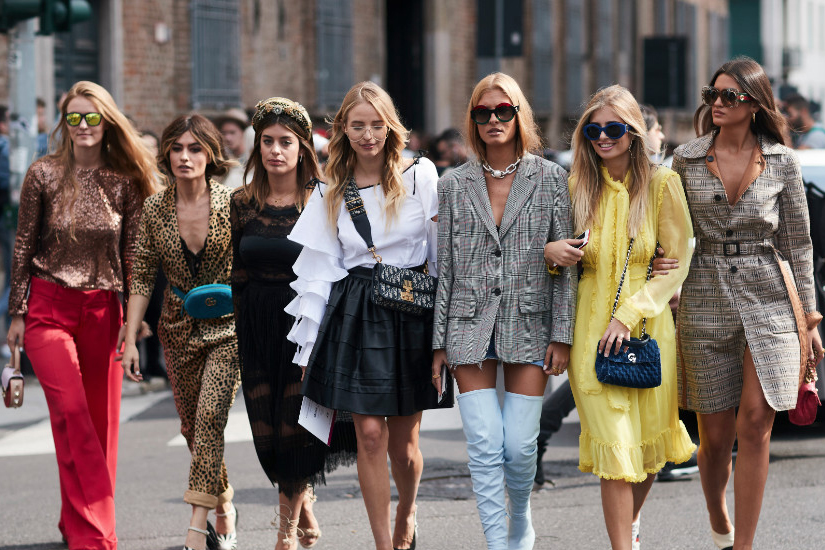
Beyond Fashion: The Enduring Allure of the Boutique Experience
In a world where fast fashion dominates and digital storefronts span continents, one might expect the humble boutique to fade into obscurity. Yet, paradoxically, the boutique is thriving—reimagined, refined, and more relevant than ever. Far more than just a retail space, a boutique represents a curated experience, a personal connection, and a celebration of individuality in an increasingly homogenized world.
The Boutique Defined: More Than Just a Small Store
The word “boutique” derives from the French term for “shop,” yet its meaning in today’s context transcends size. A boutique is typically a small, specialized business offering carefully selected products—often fashion, beauty, or lifestyle goods—that reflect a distinct aesthetic or point of view. But at its heart, a boutique is about curation, not square footage. Whether nestled on a cobbled Parisian street or discreetly tucked into a Manhattan side alley, boutiques offer a distinctive flavor of exclusivity, intimacy, and personal attention.
Unlike department stores or global chains, boutiques are not designed to appeal to the masses. Instead, they aim to attract the discerning eye—those who value craftsmanship, uniqueness, and personal expression. The boutique is a place where the customer is not just a consumer but a guest, sometimes even a muse.
The Boutique Philosophy: Curated over Commercial
Boutiques are built on a philosophy that celebrates quality over quantity, storytelling over sales tactics, and connection over conversion. Here, products are not chosen for mass appeal but for their uniqueness, artistry, or alignment with the boutique’s brand ethos. This deliberate curation is one of the key reasons shoppers are drawn to boutiques—they offer items you simply won’t find elsewhere.
Hallmarks of a Boutique Experience:
-
Personalized Service: Boutique owners and staff often know their clientele by name and preference. The shopping experience becomes a relationship, not a transaction.
-
Exclusive Selections: Inventory is limited, and many pieces are one-of-a-kind or produced in small batches, adding to their desirability.
-
Thoughtful Curation: Every item in a boutique tells part of a story, whether it’s a handwoven scarf from a small Turkish village or a minimalist dress from an emerging Scandinavian designer.
-
Aesthetic Identity: Boutiques have a strong visual and emotional identity, often tied closely to the owner’s taste or creative vision.
The Emotional Value of the Boutique
Perhaps what sets boutiques apart most profoundly is the emotional resonance they create. In an era when so much of our interaction with products happens through impersonal screens, the tactile, immersive quality of a boutique experience offers a refreshing alternative.
There’s a sense of discovery that comes from wandering into a beautifully arranged boutique, where every detail—from the scent in the air to the playlist in the background—has been intentionally curated. It evokes the charm of a bygone era, when shopping was less about utility and more about pleasure, connection, and self-expression.
Boutiques often evoke a sense of belonging. When one finds a boutique whose style mirrors their own, it feels less like shopping and more like finding a kindred spirit. This emotional alignment builds loyalty and turns customers into ambassadors.
The Rise of the Concept Boutique
In recent years, the boutique model has evolved beyond fashion. Concept boutiques now blend retail with lifestyle, art, and even hospitality. These are not just stores—they are experiences.
Imagine a boutique where you can browse limited-edition leather goods, sip artisan espresso, and attend a poetry reading, all within the same elegantly designed space. These hybrid environments deepen the sensory experience and reinforce the boutique’s role as a cultural touchstone, not merely a place of commerce.
Concept boutiques often showcase:
-
Local Artisans: Offering goods made by regional craftspeople to support local economies.
-
Multi-sensory Design: Attention to lighting, sound, scent, and texture to evoke a specific mood.
-
Cultural Programming: Hosting art shows, talks, or workshops to foster community and intellectual engagement.
Challenges and Triumphs in a Competitive Market
Of course, boutiques are not without their challenges. Operating on smaller scales often means higher per-unit costs, limited marketing budgets, and fierce competition from online retail giants. Rent in desirable areas can be exorbitant, and customer footfall is not guaranteed.
However, the boutique’s strength lies in its adaptability and authenticity. While large retailers rely on volume, boutiques leverage intimacy. Many have embraced e-commerce in a way that preserves their charm, offering online shoppers a taste of their curated worlds without sacrificing personality.
Social media, too, has become a powerful tool for boutique owners. Through platforms like Instagram, they can showcase their aesthetic, connect with like-minded customers, and build cult followings—often with little more than a smartphone and a sharp eye.
The Future of the Boutique
Looking ahead, the boutique is poised not only to endure but to thrive. As consumers become more conscious of the environmental and ethical implications of their purchases, they are turning away from mass-produced goods in favor of items with soul and story. Boutiques are uniquely positioned to meet this demand, offering sustainable, artisanal, and ethically made products that align with the values of a new generation.
Moreover, as urban centers seek to revitalize local economies and community life, boutique retail is increasingly recognized as a vital part of neighborhood identity. A well-loved boutique is more than a store—it’s a landmark, a conversation starter, and sometimes even a second home.
Final Thoughts
The boutique stands as a quiet rebellion against the impersonal tide of modern retail. It is a space where artistry meets commerce, where individuality is honored, and where shopping feels less like a necessity and more like a joyful, even poetic, experience.
In the boutique, we find a return to a slower, more intentional way of living—one that cherishes the story behind every object and values the human touch in every interaction. In a world driven by algorithms and automation, the boutique reminds us that style, like life, is best when it’s personal.

